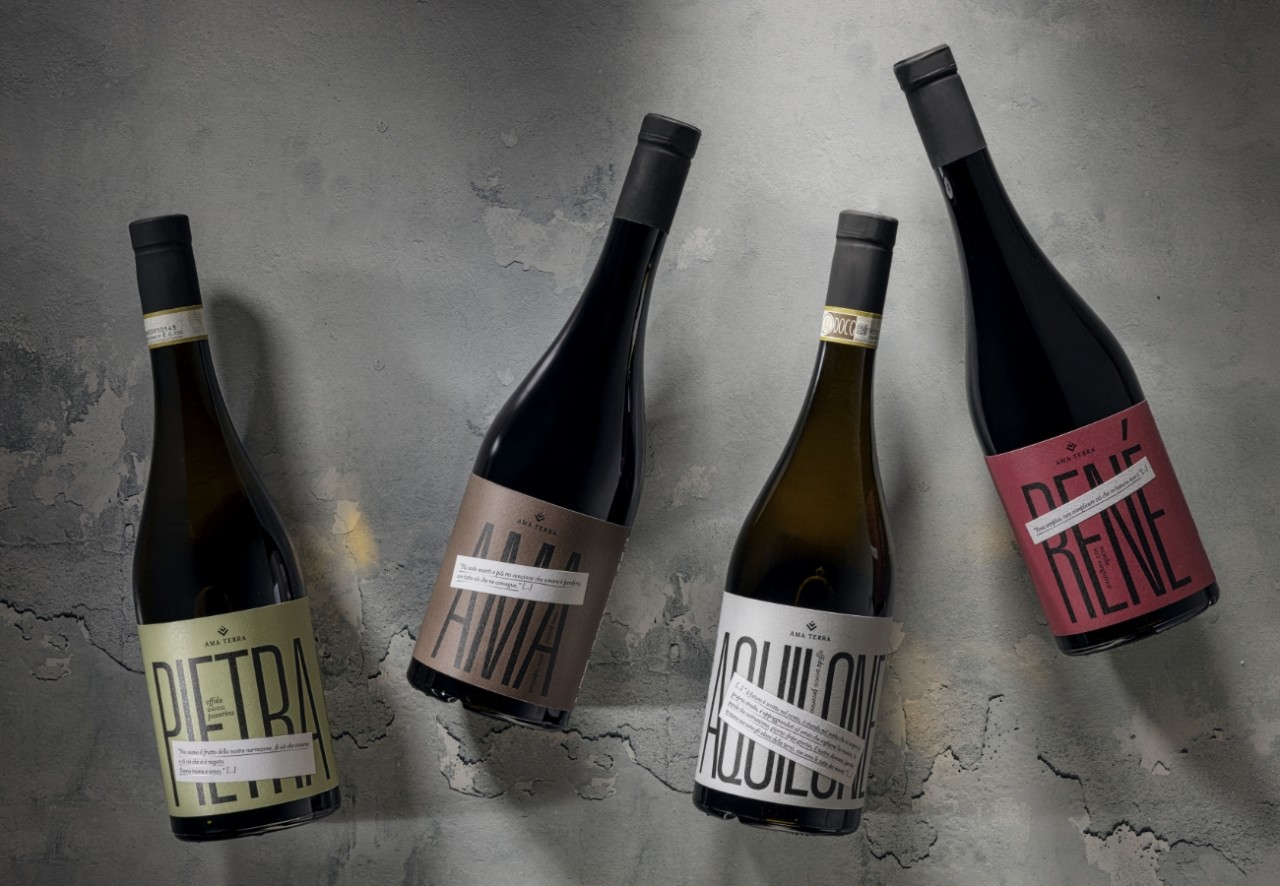The evolution of gin and the 2024 market landscape
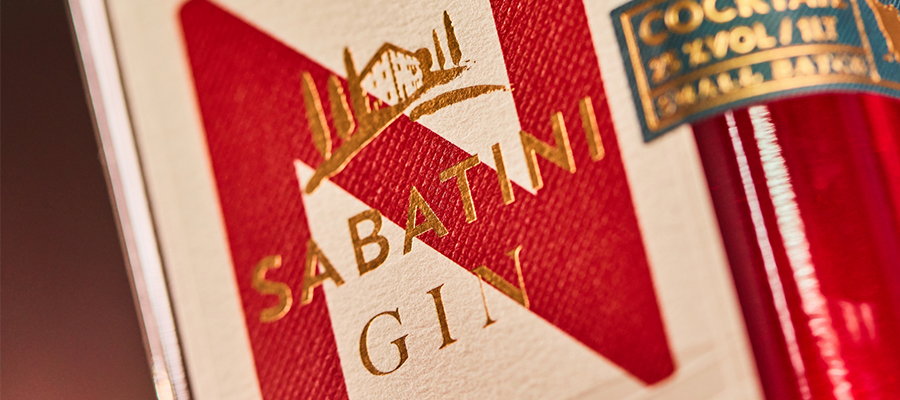
Showcasing brands leading the way in innovation and design
Design studios:
Dario Frattaruolo
Killeridea
O,Nice! Design Studio
Flov
Brands:
Sabatini Gin
Distilleria Leonardelli's
Astēr Gin
Label materials:
Fasson® Cotton Extra White
Fasson® Rustique Blanc FSC®
Fasson® Cotton White
Fasson® Fibers Look FSC®
Gin, a spirit synonymous with class and history, has evolved significantly from its medicinal origins to become one of the most popular spirits in modern bars. Initially developed in the Netherlands in the mid-17th century, gin's creation was attributed to the Dutch physician Franciscus Sylvius, who sought to distill a juniper-based medicinal spirit. This early version of gin quickly found favor across the Dutch Republic. However, it was the English soldiers fighting in the Thirty Years' War who, appreciating its warming properties and courage-inducing effects—coining the term "Dutch Courage"— brought it back to Britain.
By the 18th century, the "Gin Craze" had taken hold, with production becoming so extensive that it was consumed on a large scale by both the aristocracy and the working class. This period highlighted the spirit's dual nature—it was both a fashionable drink for the wealthy and a source of comfort for the poor against the backdrop of urban and industrial hardships. The government's attempts to control consumption through various laws, culminating in the 'Gin Acts,' reflect its significant impact on British society. Over time, gin shed its image to become a symbol of refinement and tradition, marking the nation's history from its challenging early days to becoming a staple spirit.
Fast forward to today, and gin's popularity continues to soar, transcending borders and cultures. Once primarily known for its classic 'London Dry' style, the market has exploded with innovation and diversity. According to Mordor Intelligence, the gin industry, valued at 0.86 billion liters in 2024, is expected to reach 1.13 billion liters by 2029. This impressive growth is largely driven by the increasing popularity of premium alcoholic beverages, particularly among younger consumers.
Additionally, Technavio highlights Europe as the largest market for gin, with significant growth expected due to flavor innovations and regional preferences. Countries like the UK, Spain, the Netherlands, and Germany are major players in this market.
With this in mind, let's look at some of the major trends shaping the gin market in 2024.
Emerging trends in the gin market
Exotic flavors and botanicals
There's a growing interest in exotic and tropical flavors in gin. This trend reflects a desire for travel-inspired tastes and can be seen in various gin-based products, including cocktails that feature ingredients like guava, lime, and almond syrup. Additionally, there is a growing interest in Asian-inspired botanicals in particular. Flavors such as matcha, cherry blossom, yuzu, lemongrass, and Makrut lime leaf have become increasingly popular.
Low and no-alcoholic gin
The surge in the low-alcohol and no-alcoholic gin market is a clear response to a growing health-consciousness and lifestyle choice among consumers—particularly in the wake of movements like Dry January. With advancements in production techniques, non-alcoholic gins are now able to offer a taste experience that closely mimics their alcoholic counterparts. Major brands and emerging craft producers are both contributing to this fast-growing market, as this trend caters not only to those looking to reduce alcohol consumption for health reasons but also to those interested in enjoying the social aspects of a drink without the effects of alcohol.
Sustainability and local sourcing
The focus on sustainability and local sourcing in the gin industry reflects the broader shift in consumer preference, who values products that deliver on quality and come from sustainable brands. This includes sourcing botanicals from local suppliers, which reduces the carbon footprint and supports local economies. Additionally, the industry is witnessing a trend towards environmentally conscious packaging solutions, reducing the reliance on non-renewable resources and minimizing waste. These practices are not just a marketing tool but are becoming integral to the brand ethos of many gin producers.
Storytelling through branding
Aside from sustainable packaging, distinctive branding is essential for gin producers to distinguish themselves. Unique bottle designs and creative labeling convey more than aesthetics; they communicate a deeper meaning about the brand and product. This storytelling often ties back to the gin's origin, the uniqueness of its ingredients, or the history behind its creation. For instance, some brands leverage their local traditions or cultural heritage to create a narrative that enhances the consumer's experience. This trend in storytelling is crucial in building a solid brand identity and emotional connection with consumers, who often seek a more holistic experience beyond just the taste of the gin.
Considering all of these 2024 trends, packaging is a common theme that ties them all together. The character of each gin's story is brought to life through unique bottle designs and imaginative labeling, allowing brands to connect with consumers. Packaging and labeling are often the first impression of a brand consumers get. It sets the stage, communicating the gin's unique selling points through visual and tactile cues - whether highlighting locally sourced botanicals, showcasing low or non-alcoholic options, or emphasizing recyclable packaging.
There are a handful of gin brands and concepts that are truly leading the way with their packaging and labeling solutions. To explore what makes bottles stand out on today's competitive shelves, we have compiled a few of them and talked to the design geniuses behind them.
Sabatini Gin
Tuscany, the homeland of Sabatini Gin, is truly a source of heritage and artistry. Embraced by the calm beauty of Cortona, the brand's Negroni captures the lively colors and warm flavors of Italy's most beloved cocktail. Dario Frattaruolo, the visionary behind the label's design, brings together a blend of tradition and modernity, using our Fasson® Cotton Extra White and Fasson® Rustique Blanc FSC® papers to convey the essence of the territory and the fine art of Italian distillation.
"The excellence of the newly Sabatini Gin ready-to-drink is reflected not just in the taste but in the visual and tactile experience of the label," says Frattaruolo. The design is a homage to the relationship between the gin and its roots, with Cortona's picturesque landscapes serving as the muse. The choice of materials enriches the label's connection to the region's natural beauty and artisanal heritage. "Our aim was to encapsulate the sensory journey, inviting connoisseurs to explore the cultural richness of Tuscany with every sip of the most famous cocktail born in Tuscany, the Negroni," Frattaruolo adds, highlighting the label's role as a narrative that weaves together territory and tradition.
The label's embossed details, brought to life with Luxoro foils, create a visual and tactile connection to its surroundings, offering a gateway. This thoughtful design approach celebrates our papers' versatility, perfectly complementing the Negroni's flavor profile. Sabatini Gin is a testament to the connection between product excellence and design, inviting drinkers to a tactile and visual experience that goes beyond the ordinary.
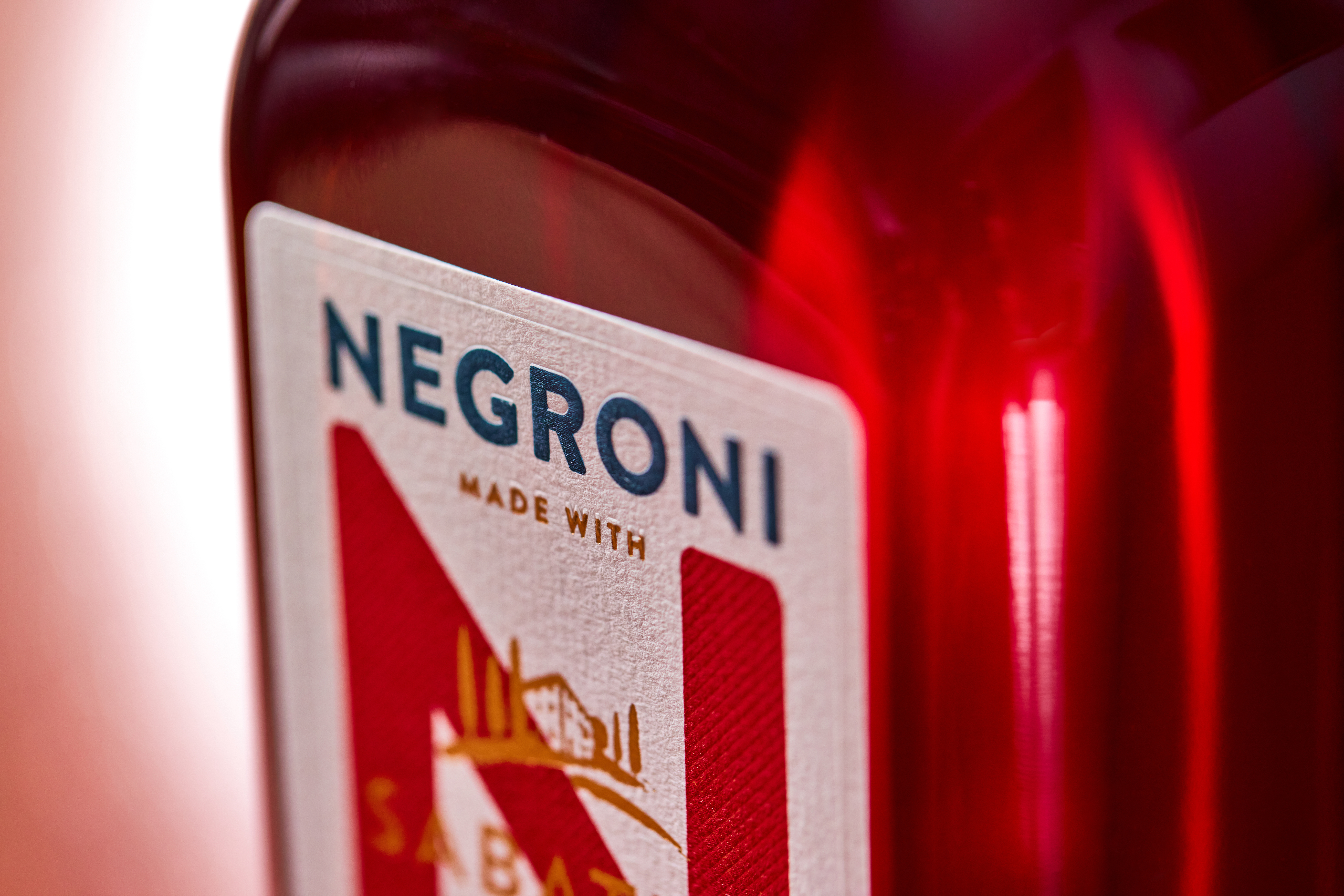
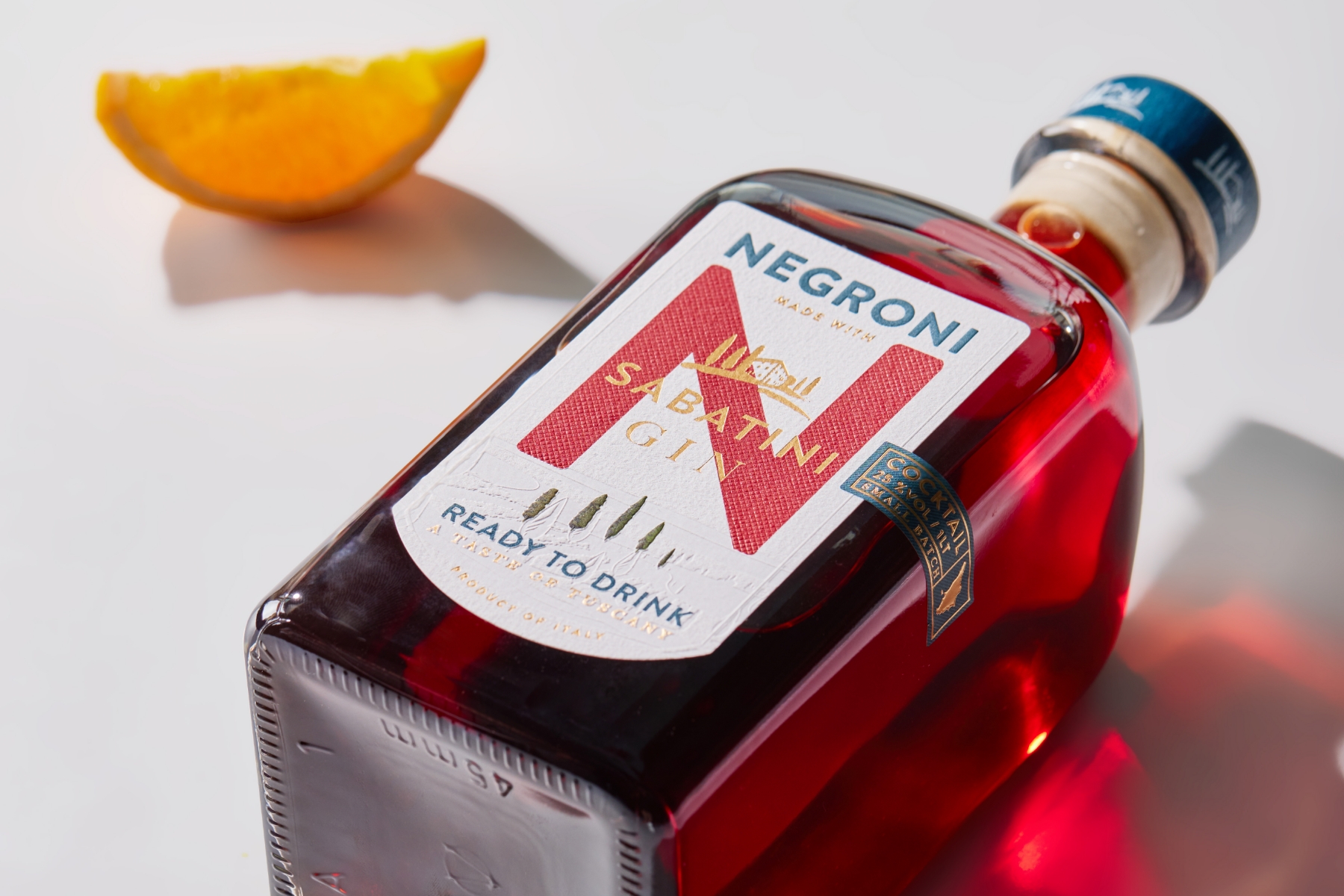
Distilleria Leonardelli Gin
Distilleria Leonardelli's organic gins, inspired by the natural sweetness of mandarins and leaves, take a step away from traditional spirit flavors. Embracing a visual style that's as bold and fresh as the ingredients, the labels, designed by Killeridea and developed by Art Director Lorenzo Cattoni, burst with the colors of nature. Using our Fasson® Cotton White Plus paper, which is made from 100% cotton with a unique velvet finish appearance, the labels serve as a canvas that captures the essence of the distillery's commitment to its surroundings.
"The uniqueness of our project lies in its simplicity and the bold use of color," says Cattoni. The design's brilliance, rooted in typography and vibrant tones, challenges the conventions of gin labeling, setting Leonardelli apart in the sector. "The inspiration was the very essence of our gins—nature itself. The labels are a direct reflection of the organic and lively characteristics of the ingredients," Cattoni explains, highlighting the narrative power of design in conveying the gin's core identity.
Once infused with color, our paper's tactile quality mirrors the organic texture of a tangerine peel or a leaf, adding to the consumer's sensory experience. This design choice differentiates the bottles and aligns with the brand's eco-conscious ethos since the material is wood-free printing paper made from 100% cotton. The enthusiastic reception from bartenders and restaurant managers, who often display the bottles prominently, underscores the design's impact. Distilleria Leonardelli's approach certainly proves how innovative packaging and a strong visual identity can captivate and engage.
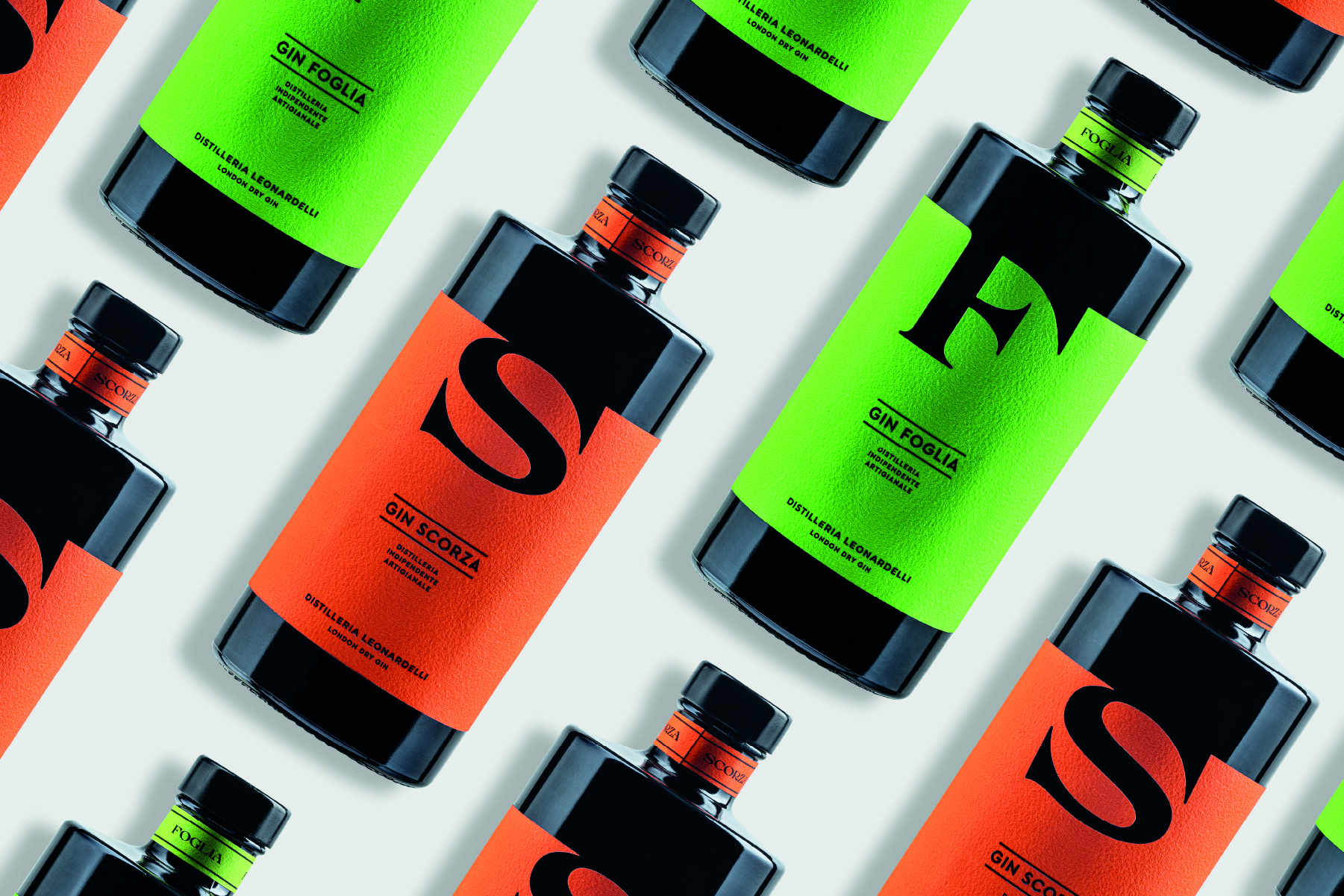
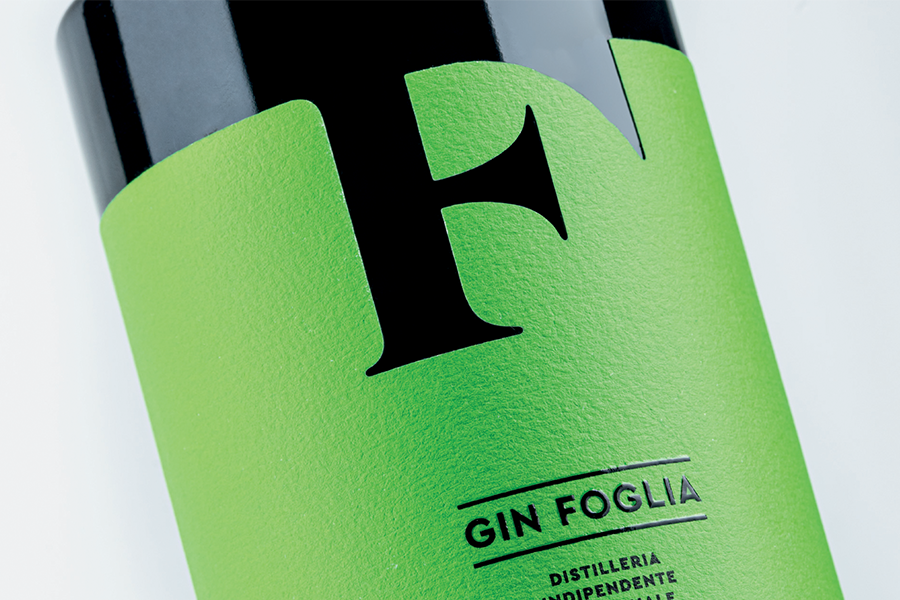
INCISO Gin
INCISO GIN, a concept born from the creative minds at O,Nice! Design Studio, explores past mysteries with a label inspired by the ancient carvings of "The Knights Rock" on Garda Lake. Art Director Stefano Torregrossa skillfully marries history with modern design, utilizing our Fasson® Fibers Look FSC® to evoke the rugged texture of stone and the fascinating tales of medieval knights.
"The essence of INCISO Gin is its connection to history, to the tactile memory of rock carvings that have withstood the test of time," Torregrossa reflects. The label's design, featuring the stone motif and silver hot foil, transforms the bottle into a tangible artifact, blurring the lines between the past and the present. "Our choice of paper was pivotal in achieving a realistic texture, adding to the intrigue and depth of the knights' tale," he adds.
INCISO GIN is a bold retelling of historical legends, offering a sensory experience that resonates with the allure of the Middle Ages. The design's success lies in its ability to transport drinkers to a different time, making each sip an exploration of history's forgotten stories.
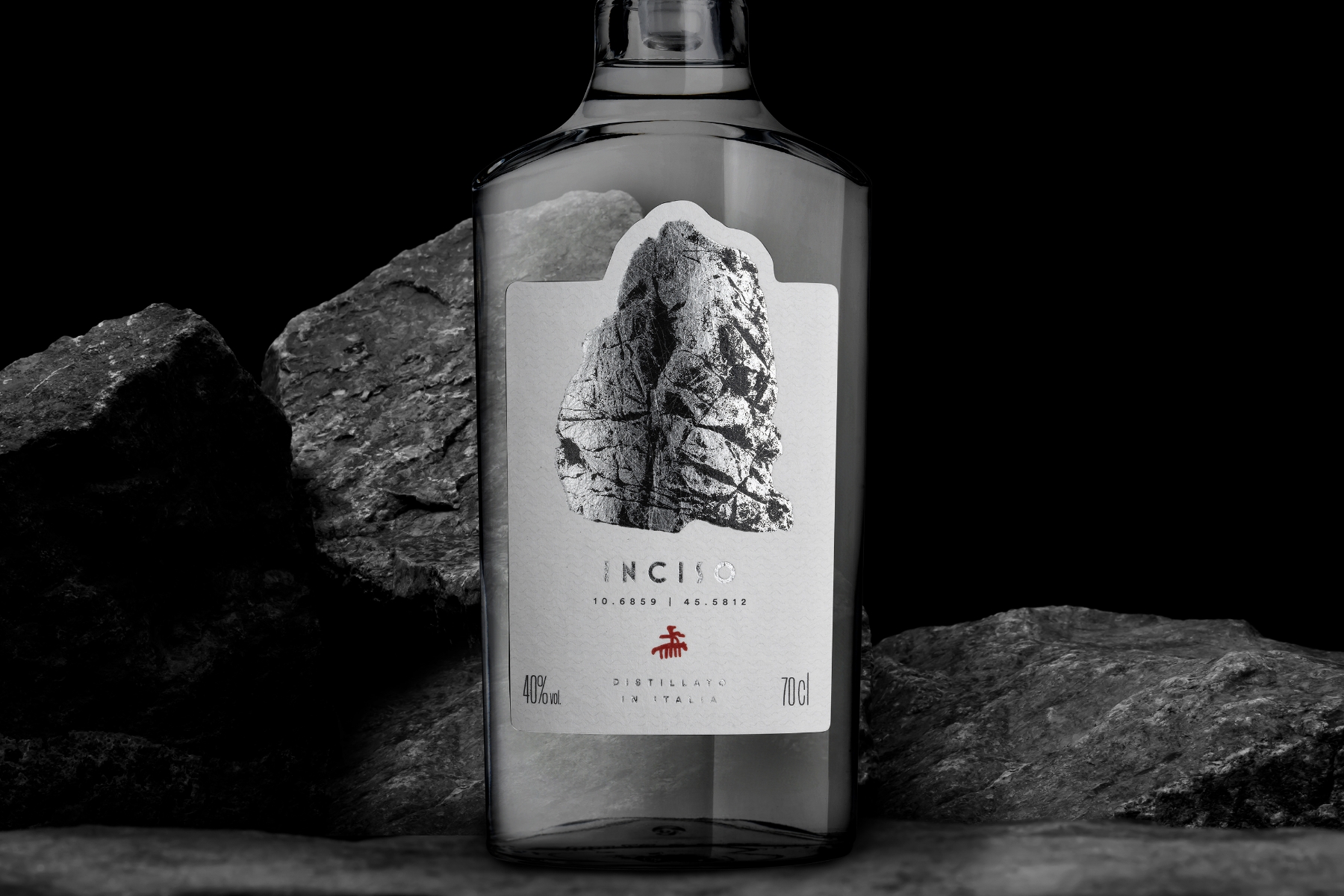
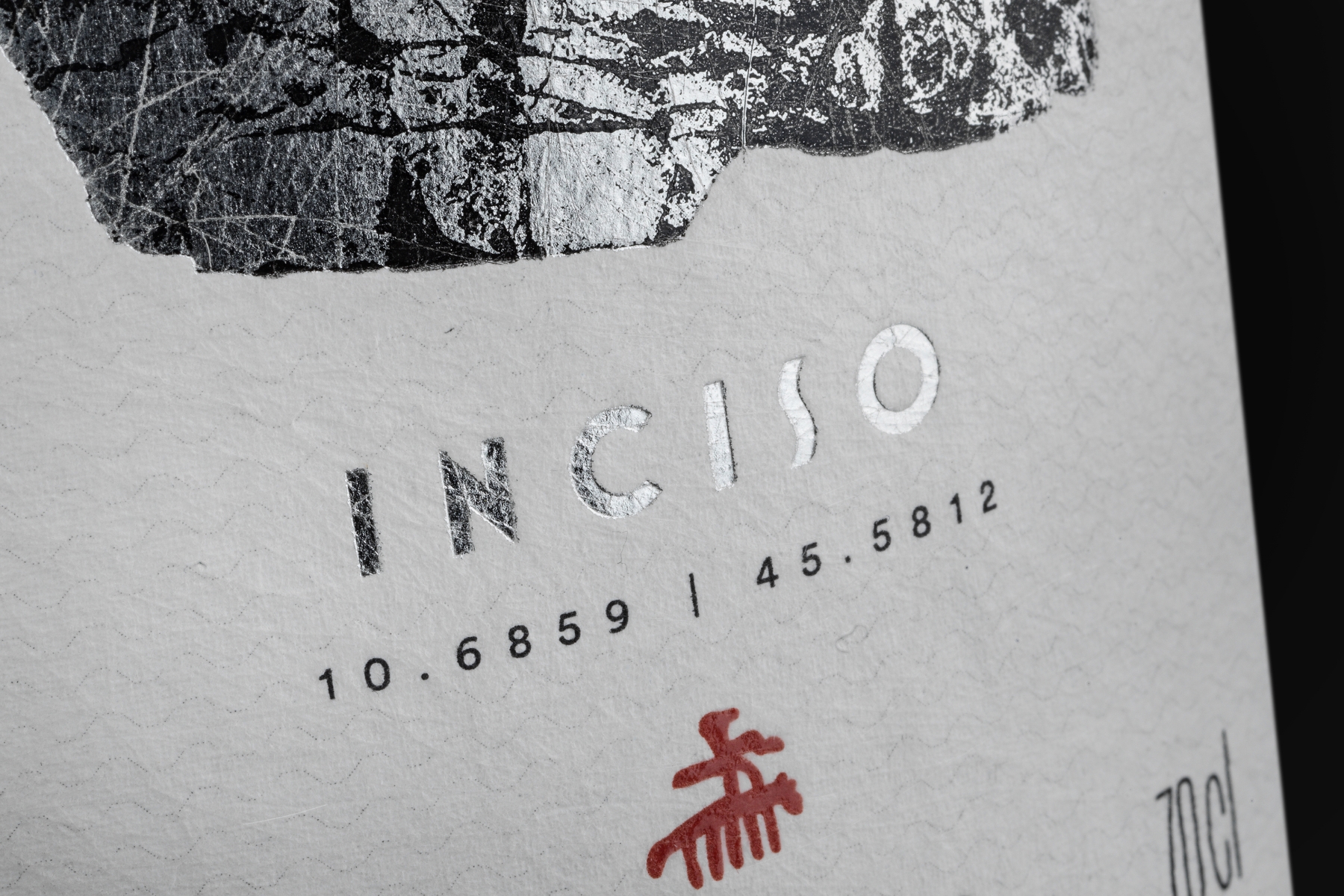
Astēr Gin
Astēr Gin, brought to life by ATO Spirits and designed by Flov, is the ideal embodiment of luxury and eco-consciousness. Founder and Art Director of Flov, Grzegorz Chorostecki, sought to capture the soul of the cosmos, resulting in a gin that transcends traditional boundaries. The label, crafted from our Fasson® Cotton Extra White, embodies this ethos, offering a physical connection to the universe with its distinctive finish.
"The Astēr Gin - Daybreak project was about achieving a balance," Chorostecki states, emphasizing the fusion of design, sustainability, and market needs. "We wanted to show that a product can be both luxurious and responsible, aligning with the values of today's discerning consumer." This commitment to sustainable luxury is evident in every aspect of Astēr Gin's look, from the minimalist design to the choice of materials that respect the environment.
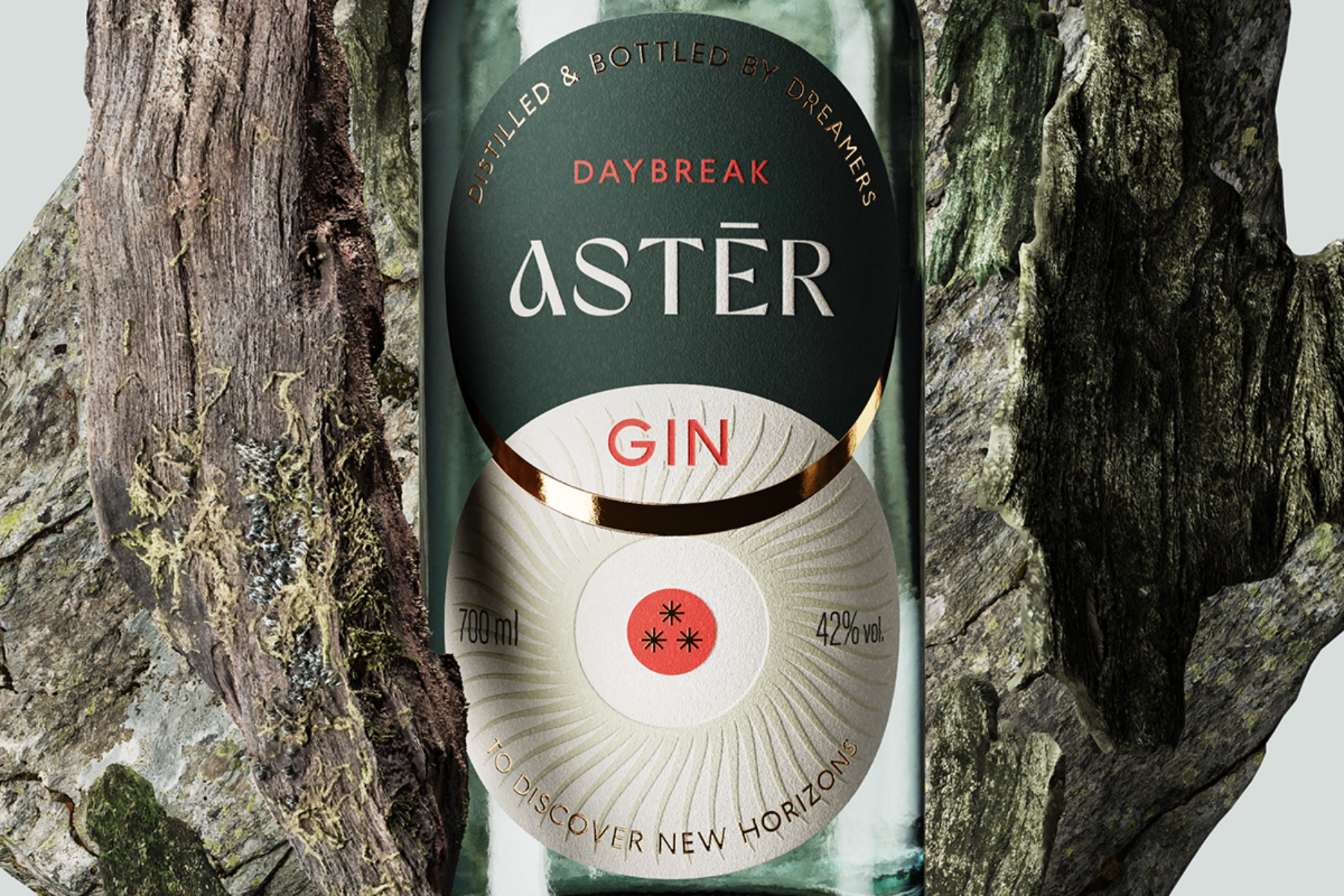
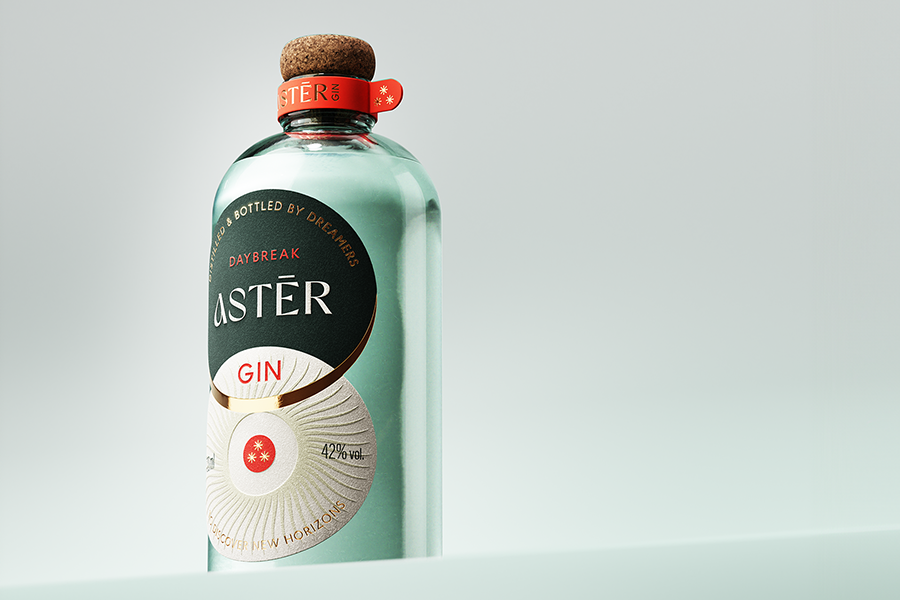
The choice of our Fasson® Cotton Extra White paper was deliberate, chosen for its ability to enhance the premium feel of the gin while adhering to environmentally friendly practices. "This material not only contributes to the theme of cosmic elegance but also ensures that our product stands out in terms of quality and design," Chorostecki adds. The result is a product that captures the imagination and resonates with consumers on a deeper level. Additionally, the distinct shape and typography of Astēr Gin's creates a sensory experience that is as boundless as space itself, affirming that the sky is not the limit but just the beginning.
Gin's journey from a 17th-century medicinal spirit to a modern-day popularity reflects a fascinating evolution, mirroring societal changes and cultural adaptations. The spirit's resurgence, marked by an explosion of flavors, innovative production techniques, and a keen focus on sustainability, highlights a dynamic industry that is both rooted in tradition and bold forward-looking.


